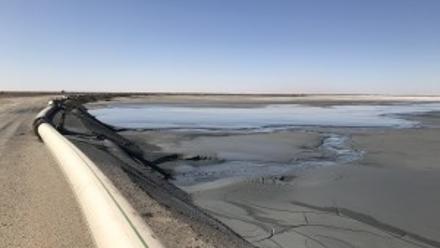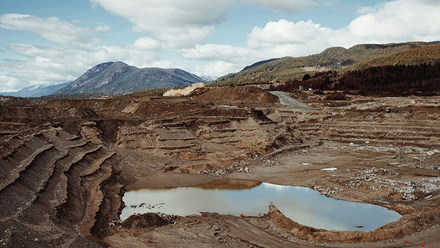Tailings – are lessons being learnt?
What has happened since the tragic dam failure in Brumadinho, Brazil, last year? Michael Schwartz reviews.

Any discussion of tailings has been dominated by the tragic events in Brazil when at least 259 people died. The Brumadinho dam disaster occurred on 25 January 2019 when a tailings dam at the Córrego do Feijão iron ore mine, 9km east of Brumadinho in Minas Gerais, suffered a catastrophic failure. The dam is owned by Vale, the company also involved in the 2015 Mariana dam disaster.
Two organisations, the Church of England Pensions Board (CofEPB) and the Swedish National Pensions Fund’s Council on Ethics (SNPFCE), have been pushing companies for data relating to tailings, notably, because up until now no tailings database has existed.
More monitoring
Tailings are an integral part of mining. As ore is crushed, ground and processed to create its valuable product, the waste generated, known as tailings, can be kept in large ponds that, in turn, are held back – in theory at least – by dams. It was the collapse of the latter and the ensuing deluges that were unleashed which led to the recent tragedies in Brazil. In the cruellest of ironies, the dam at Brumadinho, which was bought by Vale in 2001, was listed for decommissioning shortly before it burst, and it had been certified as stable.
The previously mentioned CofEPB and SNPFCE have led the way with the Investor Mining and Tailings Safety Initiative. In turn, two more organisations, the UN Environment Programme and the Norwegian-based GRID-Arendal environmental group, have launched the world’s first publicly accessible global database of mine tailings storage facilities – the Global Tailings Portal (GTP).
Launched early this year, the portal is free and at present can be searched for information about 1,800 tailings dams worldwide. One key reason behind it is that institutional investors are requesting information that has not previously been widely available. The GTP holds data on locations, heights, volumes and risks of the dams for governments, scientists, financiers, the mining industry, media and civil society. One trend is towards information coming from publicly listed companies, but figures from private companies or state entities are also welcome. As a priority, the next phase of the GTP involves testing the remote monitoring of dams via synthetic aperture radar (SAR) satellites. UK-based Catapult Satellite Applications (CSA) is carrying out this work.
And if capturing the details of existing tailings infrastructure is not difficult enough, the number of dams varies, to put it mildly, from anything between 3,500 and 33,000. This is before ownership of individual dams can be established. All too often, it is unclear who is responsible for a dam – such dams are labelled ‘orphaned’.
A further complicating factor is the future quality of the ores. Many high-grade ore deposits have been worked out, meaning attention is being directed to lower-grade deposits, in turn, leading to more waste. Better information via the GTP will mean more intense monitoring.
Company input
John Howchin, Secretary-General of the Council on Ethics at the SNPFCE, explains how they, and the other organisations involved, contacted 726 companies. Of these, 47% (340) responded, meaning that 53% (386) did not reply. Of the 340 that replied, 153 confirmed they did have tailings facilities. Forty-two companies that responded have either not yet published their disclosure on a website or have asked for extra time to complete their disclosure.
Narrowing down the figures to take in the mining sector alone, 45 out of the top 50 largest mining companies worldwide replied, corresponding to 86% of the industry by market capitalisation. However, full public disclosure was only provided by 65% of the industry by market capitalisation. Notably, each of the 23 publicly listed members of the International Council of Mining & Metals (ICMM) has responded and publicly disclosed information.
Taking action
SNPFCE, together with other investors, had originally conducted an extensive dialogue with Vale after an accident at Mariana in late 2015. The company pointed out a number of measures it had taken regarding the management of mining waste and increased safety at their tailings dams, including revised emergency plans and third-party reviews. However, after the second failure, SNPFCE concluded that Vale did not act sufficiently quickly on reported deficiencies regarding the safety of the tailings dam at Córrego do Feijão. For this reason and the core devastating and tragic consequences, SNPFCE has said: Vale’s failures have violated the Universal Declaration of Human Rights, article 3, ‘everyone has the right to life, liberty and security of person’.
Vale has breached the International Labour Organization’s convention number 155 Occupational Safety and Health Convention, article 4:2.Vale has violated the International Covenant on Civil and Political Rights, whereby ‘every human being has the inherent right to life’.
Adam Matthews, SNPFCE’s Director of Ethics and Management, adds, ‘We have continued the work of the Mining & Tailings Safety Initiative. On the eve of the first anniversary of the disaster, we convened a Tailings Summit in London and heard from the impacted communities. It was a deeply moving moment for all, underlining the continued focus to ensure that the risks for tailings are fully addressed. Following the disclosure request made by investors to over 700 extractive companies, the Summit saw the launch of the first public global database…We have also continued to drive the agreement of a new Global Industry Standard on tailings.
‘This is currently in the last stages of discussions between the experts and the three co-convenors (the ICMM, the UN Environment Programme and the Principles for Responsible Investment). Investors are also developing a set of investor expectations that will support the implementation of the standard when it is published.’
Matthews also outlines the initiative’s aim for several interventions. First is a global standard to drive best practice and performance throughout the industry, which is in train. Next is locating where the world’s dams are located. In this respect, the initiative comprises a disclosure request with publicly listed companies – nearly 2,000 facilities have been located. The third aspect is standardised and available disclosure, something which has been launched and continues to be developed. For the fourth aim, a public call has been made for a global 24/7 monitoring system. There is then the addressing of insurance and financial mechanisms to support a new global standard.
Finally, there is what Matthews describes as, ‘the most important – to see the removal of the most dangerous dams once we know where they are, who owns them and what the risk is against the new global standard. This last improvement is about the legacy that we still need to address’.
Who pays for orphaned dams?
On the subject of orphaned dams, the Pensions Board recognises that this is a major concern for investors and communities alike. Some companies have passed facilities to governments, some companies no longer exist and have not left in place the financial structures for continued maintenance and, as Matthews points out, ‘quite frankly some have been lost’.
He continues, ‘While we have been able to get a line of sight on the tailings dams under the responsibility of listed mining companies through the global database, we have yet to identify all the dams internationally. We have been testing whether technology can be used to find these facilities as they have quite a distinct footprint. We are looking to report on this shortly. Once we know where they are all located, then we need a process to identify the greatest risk facilities. This will require governments, companies and investors to work together to find a solution. We are acutely conscious of the risk posed to communities by unknown and orphaned facilities.’
As for who pays for the treatments and repairs, ‘it will depend on who owns the facility. We would expect that listed mining companies have responsibility for their facilities and need to ensure that these liabilities are clearly understood and reflected in company reporting’.
Final words
As Materials World goes to press, Vale has been ordered by a Brazilian court to pay US$1.5bln towards financial payments regarding Brumadinho, over and above the existing US$1bln of Vale’s funds that were frozen immediately after the disaster.
Howchin’s urges, ‘If your company has been contacted and not responded, please start looking at responding. There is now substantial help to get by viewing the other responses that are available on the database. Our engagement as a representative for Principles for Responsible Investment (PRI) in The Global Tailings Review…is getting closer to the end and we hope to have a global standard on the table soon. Our ambition is that this focus will give tailing dams the attention needed in terms of securing the long-term security of these dams globally. The industry must do what it takes to avoid another Brumadhino, Mariana or [as in British Columbia in 2014] Mount Polley.’








